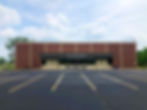top of page

Stephen Bell Elementary
Grades K-2

Bell Creek Intermediate
Grades 3-5

Jake Andrew Chappars Memorial Play Place
Playground at Bell Creek Intermediate

Stephen Bell Elementary
Grades K-2
1/5
Are school districts and property values symbiotic?
There is no official study or "smoking gun" that shows a community's schools and its housing market are interconnected. However, there is a great deal of anecdotal evidence that would support the theory. We have all watched communities grow and as they've grown the schools tend to improve, as the schools improve the area's desirability increases, which in turn boosts the property values. The same often happens in reverse as well. Schools aren't funded, they decline in desirability, fewer people seek out that location to move to, which eventually reduces both the school quality and the local housing market. A school's perceived quality does appear to have an effect on the cost of housing, for good or bad. The cost of housing also plays a part. If an area is not affordable, desirable, or preferable then there are fewer taxpayer dollars to support the schools and they will decline as a result. In 2014, an Ohio real estate blogger, made this observation. Click here, if you'd like to see her thoughts on the matter.
Several other examples of how intimately tied together a school system and a housing market are can be seen in these pictures. A) Developers will use a school district as a selling point to encourage buyers to invest in one of their new homes. B) Real estate agents, even ones that do not wish to pay more in school taxes, use the local school district as a positive selling point on their listings. C) Zillow.com allows potential buyers to map out the schools in any given area while they are looking at available real estate. If school systems did not have an effect on the perceived values of homes, then why would they be such a predominant factor in the real estate market?
A)

B)

C)

With an understanding that these two elements are interrelated, we took a look at the health of the local Bellbrook-Sugarcreek housing market. We did not look at a single year, instead we looked at the pattern of sales from 2010 to 2020. Sales trends in the area over time will present a clearer picture of how well our housing market is doing than looking at single year will. You'll see a red line in each image. This is just after the last BSS levy was passed in May of 2015. Since discussions have involved the effect of a levy on the current housing market, it seemed prudent to show how the last levy impacted home sales.
The data itself was obtained from Realtor Matrix. This is a back end system that realtors pay for access to. We enlisted the assistance of a local realtor who sat down with us and, using their account, we were all able to look at the different data sets listed below. To show the overall trends of the last decade, a dotted line has been added to each graph that tracks the center 'line' of the data as closely as is possible. We included this to make the graphs easier to read. Real estate, as shown in these graphs, is not a nice, neat line. Fluctuations are common and in many cases expected. Fewer people buy homes in the fall and winter, more buy homes in the spring and summer. Christmas tends to see a larger dip in sales, while just after school lets out there tends to be a big upswing. This is why having the center 'line' marked is helpful. It shows the general path the graph is taking.
So let's see how this area has been doing. This first graph looks at how many days a home sits on the market before it is bought.


The trend in the BSS school district has been that homes are taking less and less time to sell. The passage of the 2015 levy did nothing to slow that downward trend. In general, houses spend less time waiting to be bought now than they did eight years ago, in spite of additional property taxes that were added.
The next graph looks at the cumulative days a house sits on the market total, so listed, unlisted, relisted, etc.
The same trend is visible here. Since 2012, houses in the BSS district have spent less and less time overall waiting for a buyer.
The next graph is a little confusing. It has to do with total available inventory. In the real estate market this has to do with how many house are available to buy at a time. If LOTS of people are selling all at once, or NO ONE is buying, the inventory of available homes will be high. A low amount of inventory means that people are staying in an area and/or houses aren't available for long, so there aren't many purchasable homes available at the same time.

As you can see, the BSS area has had very low available inventory for years now. Passage of the last levy does not appear to have impacted the desirability of homes here.
The next graph shows what the average sales price in the BSS area has done in the last decade.

The expectation of inflation is 2% a year. So if the BSS housing market had merely gone up with inflation, by 2020 the average sale price would be around $250K. As you can see the general upward trend is higher than that, hovering closer to 5% which is the low end of the expected long-term increase for real estate holdings. The BSS area, at present, is a positive long-term real estate investment.
The following two graphs look at how close sellers were able to get to both their original listing price and their final asking price upon the sale of their home.


In both cases, current sellers are getting near or at their original asking price/their listing price. The 2015 levy does not appear to have had a negative impact on people wanting to live in the BSS district, as since that point in time buyers are getting more for their properties than they did prior to it passing.
While it is true that an area can become too expensive for many people, there will always be those willing to pay the higher prices if there is good reason to do so. The Villages at Indian Hill is a good example. Their public school is on par with Miami Valley School ($20K a kid/year to go there. Yikes.) but the homes in that city are, by and large, too expensive for most people to afford. The cost of maintaining that quality of education has created an environment where only those that can afford the properties as well as have a desire to live in a district of that caliber choose to move there.
Not that we are advocating BSS become like that. It is merely an example of how 'too expensive' is relative to what a person can afford versus where that person chooses to or wants to live. Many people see increased taxes as a not-particularly-fun part of funding the environment they wish to live in. Many people see additional taxes as a terrible burden that goes above and beyond the environment they wish to live in. This is a decision each citizen must make when faced with the possibility of increased taxes.
The last 10 years of housing data for BSS, though, shows that our current housing market is stable and healthy. And while no one has the ability to see into the future, each of us should take the time to consider the possibilities of our current options:
1) The levy fails and homeowners only see an increase from the reassessment. That is the near term outcome. What does the long-term outcome look like? What will the 2020 to 2030 housing market data look like if the schools remain unfunded?
2) The levy passes and homeowners taxes go up. That is the near-term outcome. What does the long-term outcome look like? What will the next decade worth of market trends look like if the schools are allowed to continue flourishing?
These are important questions to ask ourselves before we cast our votes. These decisions are not just going to affect out current lives, they will affect our futures as well. It is important to understand that.
A quote from David Graham during the Feb. 17th community meeting the school hosted (Part 1) at 20 minutes,10 seconds into the video posted on the school's youtube channel, "...because property values are going up. If anybody thinks property values have decreased over the last 6 years, I wanna talk to you about maybe buying your property..."
bottom of page

